Properties and Benefits of Nut, Almond, Hazelnut, Cashew, Peanuts, Pistachios and Brazilian Nut for Health.
Community of @steemit considering that at some time we have tried the Nut, Almond, Hazelnut, Cashew, Peanut and Brazil Nut, I consider it important to know about its properties and health benefits of each one and even its uses. I hope this information is useful.
The nut.
source
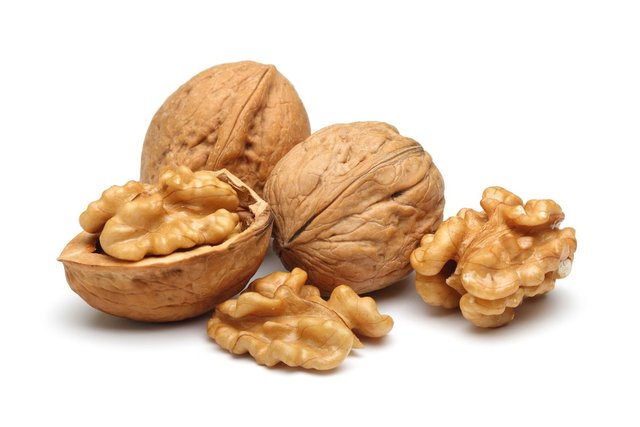
Nuts are called tree fruits, their popular names are Volosh or real walnut, mahogany walnut; They are characterized because they are spherical, with a hard shell and edible pulp, divided by partitions.
Properties of the Nut:
The Nut contain a large amount of vegetable fat: up to 75% of fatty oil, proteins, polyunsaturated fatty acids, organic acids: oleic, linoleic, palmitic, linolenic. Walnuts contain B vitamins, ascorbic acid, carotene, iodine, iron, magnesium, zinc and copper, essential oils, tannins. The walnut pulp also contains a valuable and rather rare phytomed substance called Juglon.
source
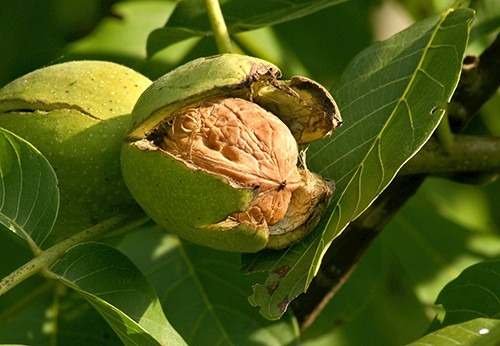
The nutrients are contained not only in the grains: the leaves of the tree contain a large amount of carotene and vitamin C. The Juglon is also found in the leaves, the green shells of the immature fruits, the bark and even the roots of the tree. Juglon is a natural antibiotic with high bactericidal and antifungal activity.
Benefits of the Nut:
Nuts are used for the treatment of headaches, migraines, relieves vascular spasms, facilitates the work of the brain, helps with insomnia, has a mild sedative effect thanks to its magnesium content.
Walnut kernels with honey have been considered as a cure for infertility and impotence. This food supplement increases the probability of conception and improves the qualitative composition of the seminal fluid.
Nuts that are eaten on an empty stomach can normalize the acidity of the gastric juice even during the week.
Taking an infusion with the peel of the nuts helps with diabetes, obesity, reduces blood sugar levels, reduces cholesterol levels, treats hypertension and atherosclerosis.
Raw nuts by themselves are an excellent delicate and healthy product for nutrition.
Thanks to its important properties the nut is antioxidant, it protects the eyes and the body from infections.
If you want to know how to consume it besides eating raw, you should know that the nut is considered the main component of the famous oriental sweets. In addition they are added to chocolate, ice cream, cakes, cakes, honey and so on. Hot sauces are prepared for meat and fish dishes. Walnut oil is an excellent dressing for salads and cold appetizers.
The almonds.
source
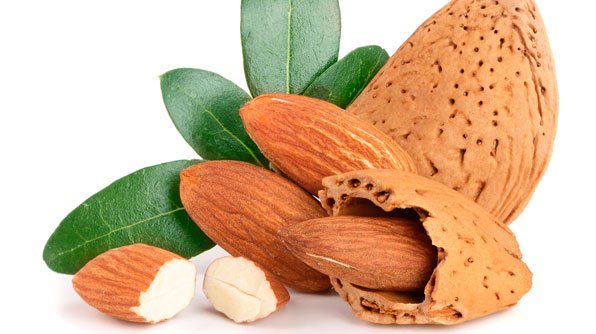
The almond is a large shrub or short tree of the pink family, it is a stone fruit that is sometimes classified as nuts.
Properties of the Almond:
Almonds contain large amounts of monounsaturated fats, possess B vitamins, carotene, vitamin E, antioxidants, organic acids and bioflavonoids. The fruit of the almond contains phosphorus, calcium, magnesium and calcium. The almonds have an optimal balance of proteins and carbohydrates. The largest amount of nutrients is found in the skin and in the pulp closest to the skin, so it is recommended to use the nut together with the skin.
source
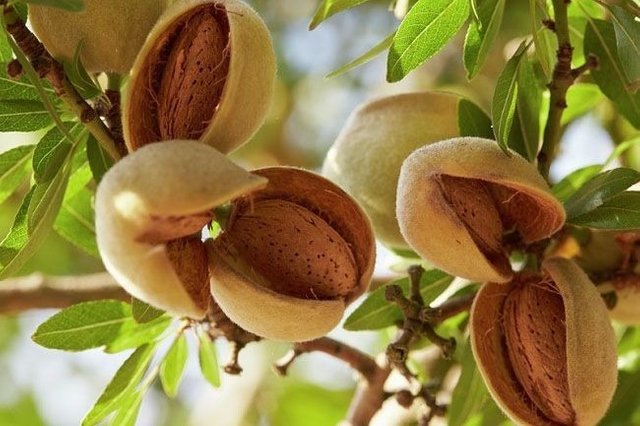
Benefits of the Almond:
The composition of almond nuts contributes to rapid growth, cell renewal, strengthening of bones and joints, eliminating the sand from the kidneys, relieving inflammation, helps reduce cholesterol, eliminates inflammation of the origin of the heart.
Due to the high content of phosphorus, regular consumption of almonds helps improve brain activity.
The almond helps with migraine, insomnia, fatigue, nervous breakdowns, depression.
Almond is used in a fried form, it is used to prepare a variety of confectionery, sweets, it is added to cakes and chocolate. Due to the bitter taste of the cake, almonds are used to flavor tea, coffee, tobacco.
The almond oil, extracted from the fruit, has excellent healing and cosmetic properties. On this basis, creams, masks, serums and other various cosmetic products are produced.
You should know that it is not recommended to eat a green almond, since its fruits contain cyanides, which can cause intoxication.
The Hazelnut.
source
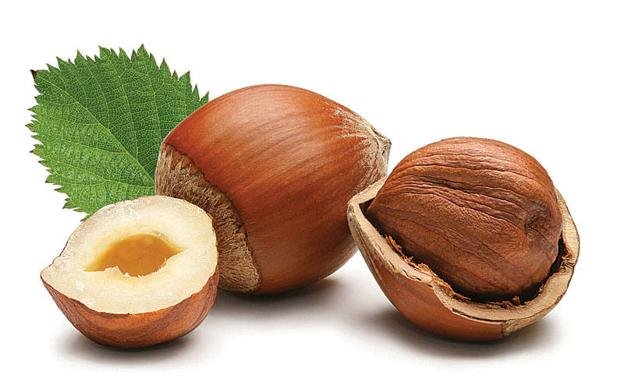
The hazel, comes from a tree of the family of the birch, small with round fruits and hard shell.
Properties of Hazelnut:
Hazelnut has a high content of proteins, fats and carbohydrates. It has up to 60% fat oil, consisting of organic fatty acids, up to 20% high quality proteins, which makes it an essential product for vegetarians. Hazelnuts contain vitamins E and B, various minerals: calcium, iron, potassium, magnesium, phosphorus and others.
source
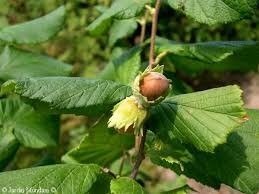
Benefits of Hazelnut:
Due to its composition, hazelnuts have a positive effect on the cardiovascular system. Potassium and calcium help maintain the smooth walls of the blood vessels and muscles of the heart, while maintaining their elasticity.
Hazelnuts improve the composition of blood and increases the level of hemoglobin, reduces the amount of harmful cholesterol, has a positive effect on anemia, thrombophlebitis and varicose veins.
Hazelnut contains a rare and important substance: paclitaxel, which has anti-cancer properties. It can be used to prevent the appearance of malignant tumors.
The unique combination of vitamin E and proteins that the hazelnut possesses contributes to the growth and strengthening of the body's muscle tissue.
Hazelnuts are useful when there are problems with the prostate gland, to clear the liver and gallbladder, with a general decrease in tone and immunity.
Hazelnuts prevents fermentation processes in the gastrointestinal tract, favors the absorption of various products.
Hazelnut contains few carbohydrates and sugars, despite the high calorie content, so diabetics can use it safely.
Hazelnuts have a flavor, aroma and the ability to preserve freshness for a long time, so it is useful for dressing salads, fish dishes and vegetables.
Hazelnuts are used for cooking, both raw and fried. They are added to confectionery, chocolate, caramel, glaze, covered with caramel, and so on. It is used to add a nutty flavor to tea and coffee, liqueurs, alcoholic dyes.
If you want a vitamin supplement with hazelnuts, the grinds together with the plums, mix with honey and take in a teaspoon three times a day.
The Cashew.
source
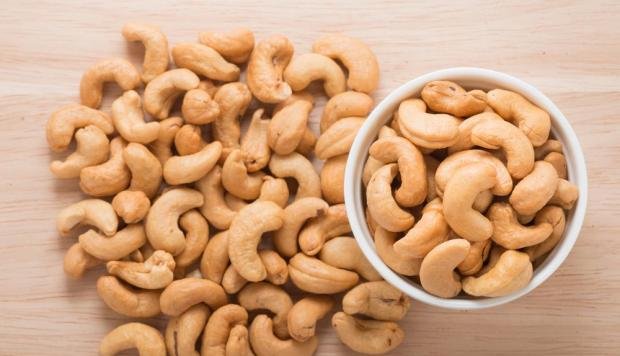
The cashew tree is a tree with edible nuts, belonging to the sumach family.
Properties of Cashew:
Cashews are rich in protein and carbohydrates, fatty acids and oils, vitamins A, B1 and B2. The composition contains a large amount of iron, zinc and phosphorus, as well as calcium and potassium.
source
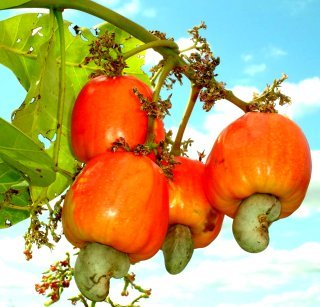
Benefits of Cashew:
The regular consumption of cashews strengthens the immune system, improves metabolism, strengthens the cardiovascular system, reduces cholesterol and blood sugar.
It has tonic, antimicrobial, antiseptic and immune action that strengthens the body, helps with inflammation of mucous membranes and toothache.
Cashews contain less fat than almonds, peanuts or nuts, and that's why they are ideal as dietary fruits.
Cashews are consumed in their pure form, also fried, and are added to salads, meat and vegetable dishes, even cashew juice is made.
The Peanuts.
source
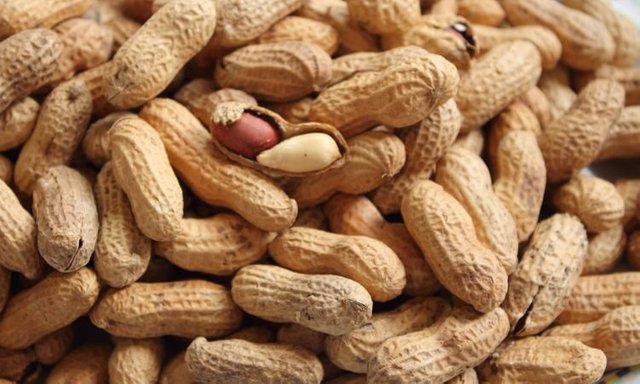
The peanuts come from a perennial plant of the legume family, and are grown through a pod. In each pod there are several nuts with thin red or pink skin and light pulp. Peanuts are grown in large quantities, stored for a long time and are easy to transport.
source
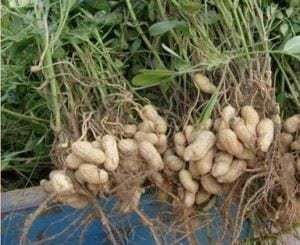
Properties of peanuts:
Peanuts contain carbohydrates and natural sugars, easily digestible proteins, fatty oils, vitamins and minerals. It is rich in unsaturated fatty acids, which are useful for the prevention of sclerosis, especially linoleic acid.
Peanuts contain B vitamins, vitamin E, ascorbic acid, folic acid. Minerals should pay attention to magnesium, phosphorus, iron, calcium, zinc, selenium and manganese.
Benefits of peanuts:
Peanuts are rich in antioxidants that slow down aging.
The peanut is a fatty fruit and high in calories, and should be consumed moderately. However, under conditions of adequate processing, it can be a very useful and nutritious product that improves cardiac activity, metabolism, which has a tonic and immune effect.
Peanuts are useful for blood diseases, such as anemia and can even relieve the symptoms of serious diseases, such as hemophilia.
The most popular way to cook peanuts is to roast, but if you want to keep all the vitamins you can boil them.
The Pistachios.
source
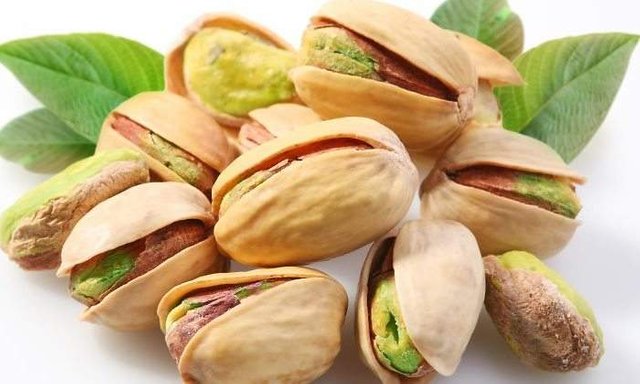
Pistachios come from trees or evergreen shrubs or deciduous trees of the Sumach family. This fruit is made of bone, which contains an elongated seed (walnut in culinary value, but not botanical) with a hard, whitish skin and a light green core with a characteristic odor.
Properties of pistachios:
Pistachios have a balanced combination of calories, vitamins, amino acids and minerals, and contain fat, protein, carbohydrates, dietary fiber; Group B vitamins (B1, B2, B5, B6, B9), vitamin E, vitamin PP, choline; macronutrients, namely: calcium, magnesium, potassium, phosphorus, sulfur; mineral elements (iron, zinc, iodine, copper, boron, selenium).
source
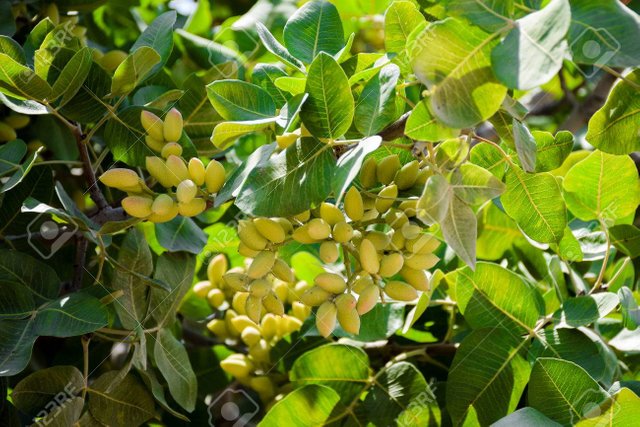
Benefits of Pistachio:
Pistachios can compete in terms of the content of B vitamins with beef liver. Only 10 pistachio nuts a day, gives a quarter of the daily intake of vitamin B6.
Pistachios are also beneficial in the organization of diet and in vegetarianism, since nuts are rich in proteins, do not contain cholesterol or fats, therefore they serve as a substitute for animal products.
Pistachios have a tonic and rejuvenating effect thanks to the presence of a high content of vitamin E, as well as the presence of phenolic compounds that cause the antioxidant effect, the renewal and growth of the body's cells, its protection against the effects negative of free radicals.
Pistachios are useful for the presence of dietary fiber, whose task is to form chemical compounds with various toxic substances, eliminate them from the body and maintain normal cholesterol levels in the blood.
The dietary fiber that contains the pistachios helps to increase the beneficial bacteria in the intestines and synthesize the B vitamins, forming enzymes. Therefore, pistachios improve digestion, prevent the reproduction of harmful microorganisms and the formation of carcinogens and toxins, thus strengthening the immune system.
Pistachios contain a large amount of carotenoids, responsible for the normalization of vision and strengthening of the bony tissues of the body.
Pistachios are excellent for strengthening the cardiovascular system. Its regular use in limited quantities will help to strengthen blood vessels, normalize fast heartbeats, as well as to get rid of liver colic, to clean the bile ducts and improve sexual potency.
Pistachios are also used in the treatment of respiratory tract and tuberculosis.
Pistachios are used both raw and fried. The peel of the ripe pistachios opens, exposing the kernel, so that these nuts, unique in their class, can be baked and salted directly in the shell. Unsalted pistachios are excellent for baking and desserts. Many people prefer pistachio ice cream because of its pale green color and excellent flavor.
The Nut of Brazil.
source
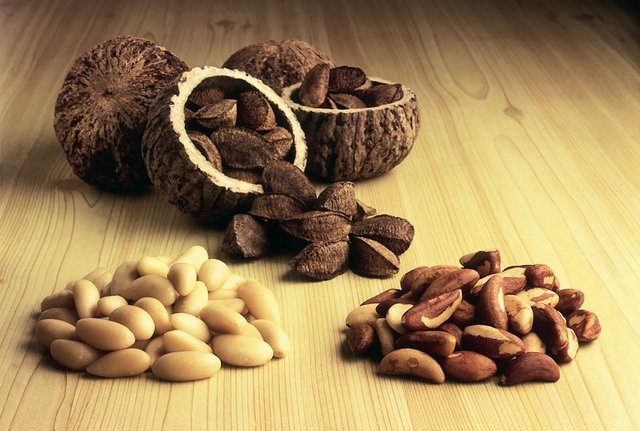
The Nut of Brazil, as it is named, is a South American tree fruit called Bertoletiya, of the Lecithis family. Brazil nuts are officially considered as grain: their kernel grows to the shell and is not divided into two halves, like other nuts.
The trees in which the Brazilian nuts grow are really unique: they reach a height of about 40-50 meters and live more than 500 years. Up to 200 kg of fruits are harvested from one tree per year.
source
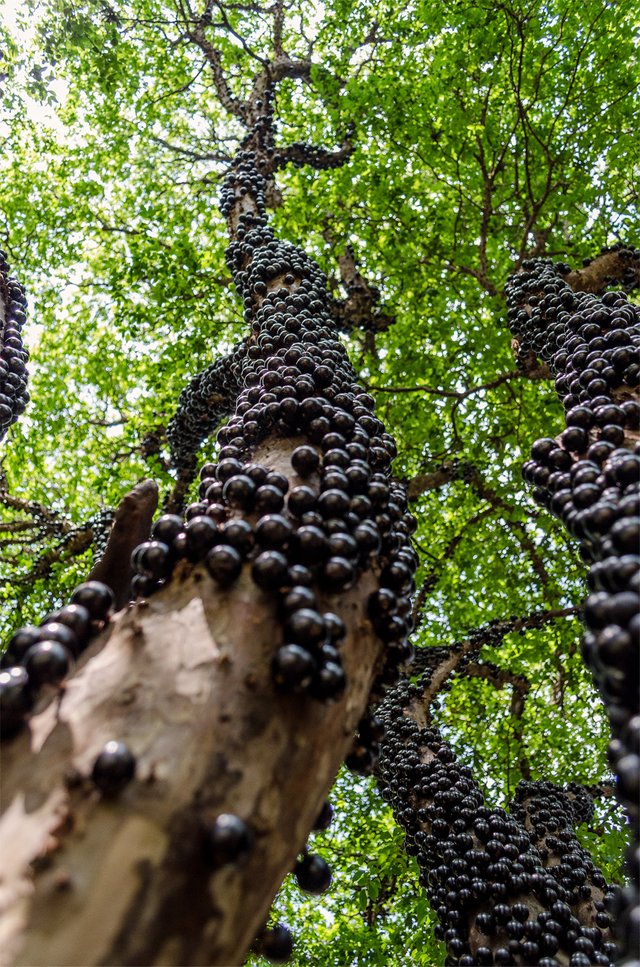
Properties of the Brazil nut:
The composition of Brazil nuts includes almost all the necessary human substances: proteins, fats, carbohydrates, fiber, vitamins and minerals. Due to the large amount of fat (67 g), they have a high caloric content, reaching 703 kcal. These nuts have a rich set of vitamins: A, E, B vitamins; Ascorbic acid and minerals: calcium, magnesium, phosphorus, potassium, sodium, iron, zinc, copper, manganese, selenium. It contains flavonoids and a large number of amino acids, including essential and conditionally irreplaceable.
Benefits of the Brazil nut:
Thanks to the flavonoids of the Brazil nut, you get valuable natural substances that have antioxidant activity and ensure the effective flow of all reactions in the body.
The amino acids present in Brazil nuts promote the growth of muscle tissue, promote the normal metabolism of fats and carbohydrates.
The Brazil nut is rich in selenium, which protects the body from cancer, radiation, the damaging effects of free radicals and premature aging. Due to the high content of selenium and other active substances, it has an anticarcinogenic effect on tissues and cells.
Brazil nut improves sexual function and helps infertility. It is a strong aphrodisiac.
In kitchens around the world there are many recipes for cooking with Brazil nuts: pastries, rolls, cakes, chocolates, ice creams, cakes, etc. They are also added to salads, they make sauces for meat and vegetable dishes.
source
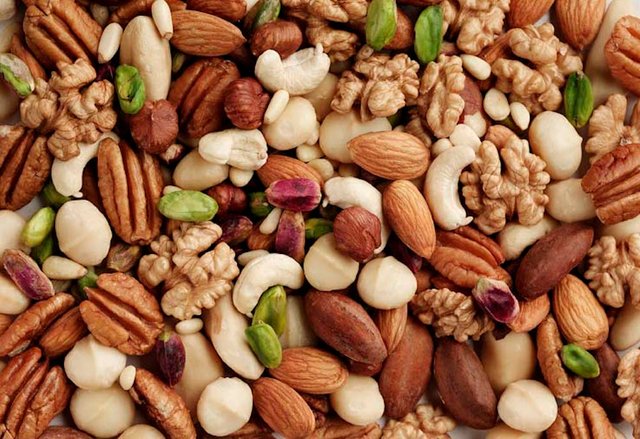
I hope you find this information useful on all these dried fruits.